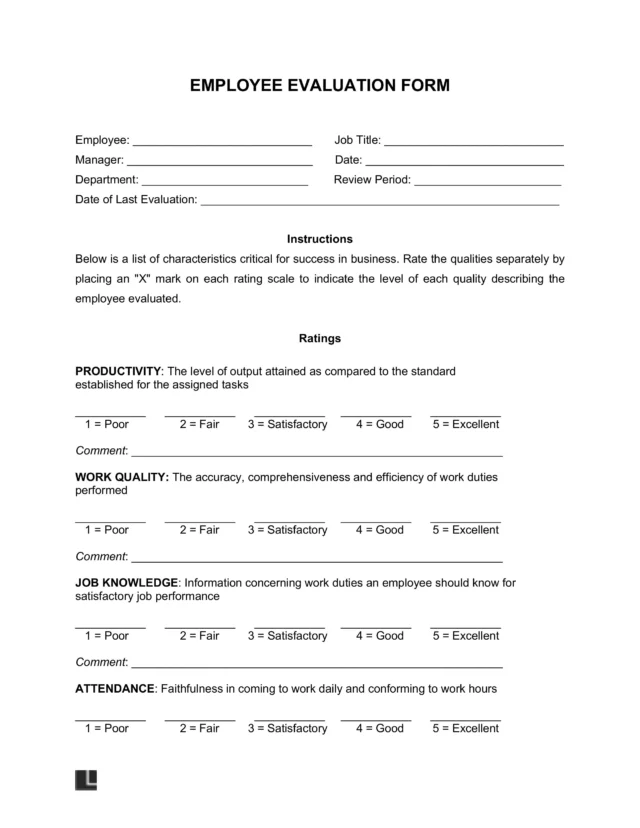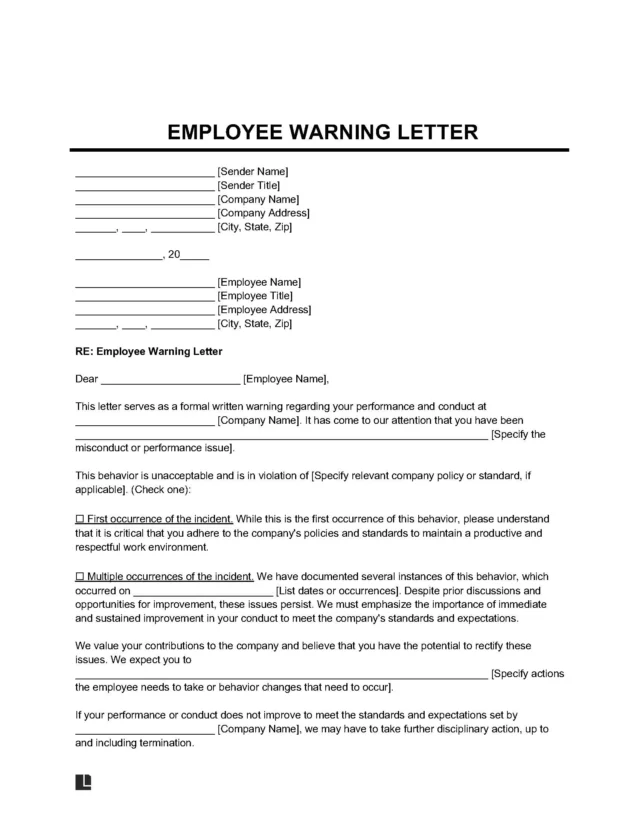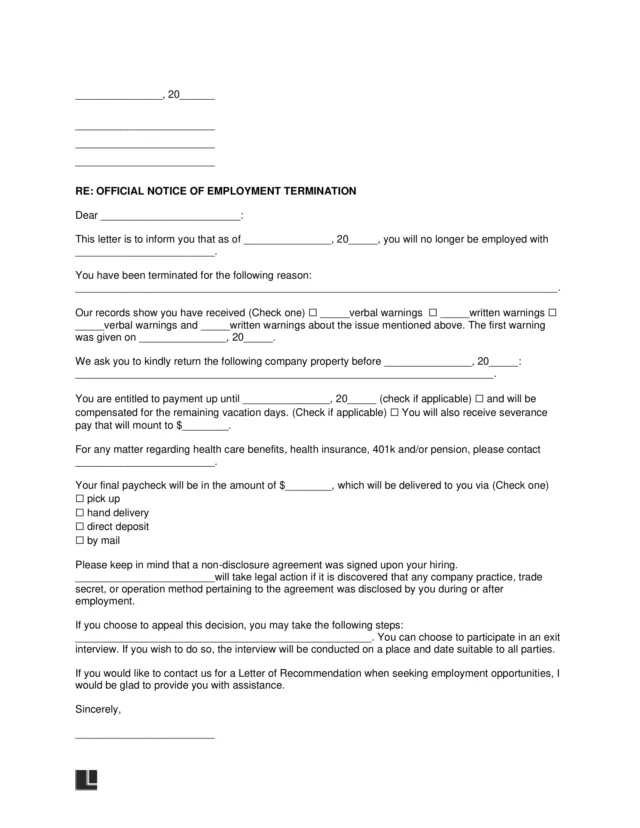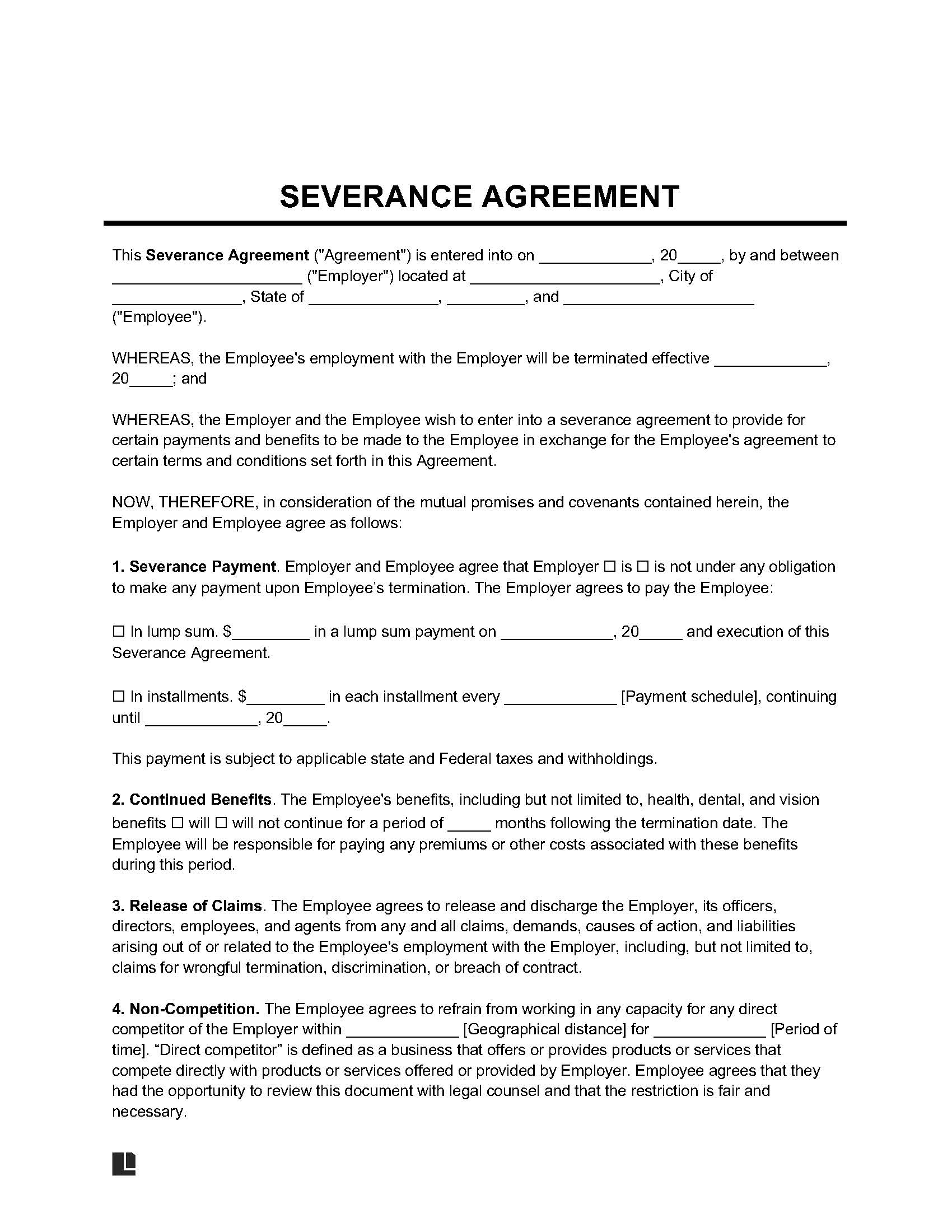A severance agreement is a document that allows an employer to let go of an employee without being further liable for them. For this document to be legally binding, it must contain severance pay, which is the consideration that the employee receives in exchange for being released from the company’s liability.
Is Severance Pay Required By Law?
No federal or state laws require severance pay, but companies can choose to offer it to maintain goodwill and mitigate some legal risks. For example, employees who receive compensation may be less likely to initiate a lawsuit in retaliation for being fired.
What Is a Severance Agreement?
A severance agreement allows an employer to fire an employee and release its liabilities toward the employee. It shields both the employer and the employee from potential claims of misconduct, as it acknowledges that either party could be accused of wrongdoing (whether warranted or not).
An employer should know their liabilities without this document, including worker’s compensation, harassment, and discrimination. Similarly, employees may have liabilities without one, such as solicitation, harassment, and negligence.
What Does a Typical Severance Package Include?
Severance Pay
Severance pay is usually the central element. It’s additional pay awarded to thank an employee for their time with the company and improve their financial situation while they look for a new job.
If the employee has any business expenses they haven’t received reimbursement for or any vacation time left over, they can receive these amounts in their severance pay.
Recommended Severance
You can determine an ideal severance amount to pay an employee based on several factors, including:
- Their length of service
- Their job level
- The reason for the end of the employer-employee relationship
- The value of other benefits you’re providing (besides the monetary payment)
Continuation of Insurance
As an employer, you can’t maintain the employee’s insurance indefinitely. However, you can extend their coverage for a specific period while they search for a new job, either by keeping them on your insurance plan or using the Consolidated Omnibus Budget Reconciliation Act (COBRA).
This severance benefit is particularly beneficial for long-term employees who depend on this insurance for their families.
Healthcare Benefits
Some employers may offer additional healthcare benefits as part of the severance package in addition to continuation of insurance. These can include access to mental health services or counseling, assistance finding a new healthcare provider, or even coverage for a certain period after the employee’s departure.
Retirement Benefits
Depending on the company and the employee’s tenure, a severance package may include retirement benefits such as access to a 401(k) plan or pension plan. Employers may also guide rolling over retirement accounts or other financial planning resources.
Company Stock
If the employee holds company stock or stock options, their severance package may include guidance on what will happen to those assets. Employers may offer to buy back the stock at a fair market value or provide additional options to compensate for the loss.
Outplacement Services
Outplacement services can be a valuable resource for employees leaving the company. These services can include access to job search tools, resume and cover letter assistance, interview coaching, and networking opportunities. Employers may also offer access to job boards or other resources to help employees find new roles.
Career Transition Support
Some employers may provide additional support for the employee’s career transition in addition to outplacement services. This can include access to career coaching or mentoring, assistance with a job search strategy, or even help negotiating a job offer.
References
Finally, some employers may offer to provide a reference for the employee as they search for a new job. This can be a valuable asset for the employee, especially if they have a strong relationship with someone at the company or if the employer has a good reputation in their industry. Employers should be careful to provide accurate and honest references and not make promises they cannot keep.
How to Negotiate the Severance Package
Negotiating a severance package with an employee requires a fair approach and transparent communication. Here are some steps you can follow to negotiate their severance package successfully:
Step 1 – Prepare for the Conversation
Review the employee’s employment contract and your company’s policies to determine any baselines for the negotiation. You can also consider the employee’s tenure and contributions to decide on a suitable amount of severance pay.
Step 2 – Initiate the Conversation
Schedule a private meeting with the employee to discuss their termination and severance. Be honest about the company’s decision to let them go and present them with the company’s initial offer. Include the severance pay, outplacement services, the continuation of health benefits, and any other severance benefits you want to provide.
Step 3 – Allow the Employee to Counteroffer
Once an employee acknowledges your offer, allow them to counteroffer. Listen to their thoughts and concerns to see their reasoning for the counteroffer they provide. Acknowledge any specific needs they have.
Initiating this conversation requires compassion and patience. For related tips on navigating difficult conversations in the workplace, review how to fire an employee.
Step 4 – Engage in Continued Negotiation
Negotiate the terms of their severance package while remaining within what’s reasonable for the company’s budget.
Step 5 – Get the Agreement in Writing
Once you and the employee agree on all the terms for their severance package, get the agreement in writing. Follow through on your promises and acquire the employee’s signature.
Severance Package Example
Here’s an example of the severance package an employee could receive, including continued pay and benefits:
Employer and Employee agree that Employer must pay upon Employee’s termination. The Employer agrees to pay the Employee:
In installments. $3,000 in each installment every two weeks, continuing until December 1, 2023. This payment is subject to applicable state and Federal taxes and withholdings.
The Employee’s benefits, including, but not limited to, health, dental, and vision benefits, will continue for two months following the termination date. During this period, the employee will be responsible for paying any premiums or other costs associated with these benefits.
Components of a Severance Agreement
Severance agreements outline the terms and benefits to both parties involved, including:
- The effective date of the document
- The name and address of the employer
- The name of the employee
- The employee’s termination date
- The severance payment amount
- The continuation of benefits, if applicable
- The employee’s release of claims
- Confidentiality, non-compete, and non-disparagement agreements from the employee
- The employee’s and employer’s signatures
You may also issue a formal termination letter to confirm that the employee knows their employment is ending.
Non-Compete and Non-Disclosure Clauses
Non-Compete Clauses – The FTC’s Final Rule prohibiting most non-compete agreements and clauses was invalidated by a Texas federal court in August 2024, allowing employers to continue using these agreements as per state law. The FTC’s broad restriction faced a judicial challenge for overstepping its authority, casting doubt on the rule’s future implementation.
Non-Disclosure Clauses – Additionally, the “Speak Out Act” was signed into law in December 2022, which prohibits the enforcement of non-disclosure clauses in severance agreements or pre-dispute agreements that prohibit disclosure of disparaging comments or descriptions of circumstances relating to claims of sexual harassment or assault. These clauses will be deemed non-enforceable, and employers should review their severance and separation agreements to ensure they are enforceable.
How to Write a Severance Agreement
Step 1 – Provide Introductory Information
The first paragraph introduces the document as a whole. It lists the severance date, the names of the employer and employee, and the employer’s location.
Step 2 – Write the Date of Employment Termination
The date the severance agreement is entered into is not necessarily the same as when employment is terminated. In some cases, one or two weeks of the employee’s time with the company may be left. However, the termination date of employment should be laid out in the severance agreement.
Step 3 – State the Severance Payment Amount
State the amount of the severance payment. Clarify if the employee will receive a one-time lump payment or installment. If they’ll receive installments, explain the frequency and end date of the installments.
Step 4 – Clarify If Benefits Are Continued
Clarify if benefits are continued. If they are, state for how long the employee will continue to have access to them.
Step 5 – Include Non-Competition and Confidentiality Agreements
Include the specifics of any non-competition and confidentiality agreements. For example, you may specify that the employee isn’t allowed to work for a competing entity for a certain period after their termination. You can also ask that they withhold from sharing confidential or proprietary information.
Step 6 – Ban the Employee and Employer From Disparaging the Company
Prohibit the employee and employer from speaking negatively about the opposite party in private or public settings.
In this section, you can indicate whether you’ve attached a reference letter for the employee to use when applying for new jobs.
Step 7 – State the Provided Benefits
Outline the benefits provided to the employee as compensation for the severance and ask for other agreements from them. The next section will describe those benefits in detail.
Step 8 – Specify the Governing Law
The severance agreement will also detail the state that holds the governing law for both the company and the employee. Laws about unemployment and insurance may vary from state to state, which makes this essential information if an issue arises.
Step 9 – Acquire Signatures
You can sign the severance agreement once the employee agrees to all the terms. Both parties’ signatures make the document official and enforceable.
Sample Severance Agreement
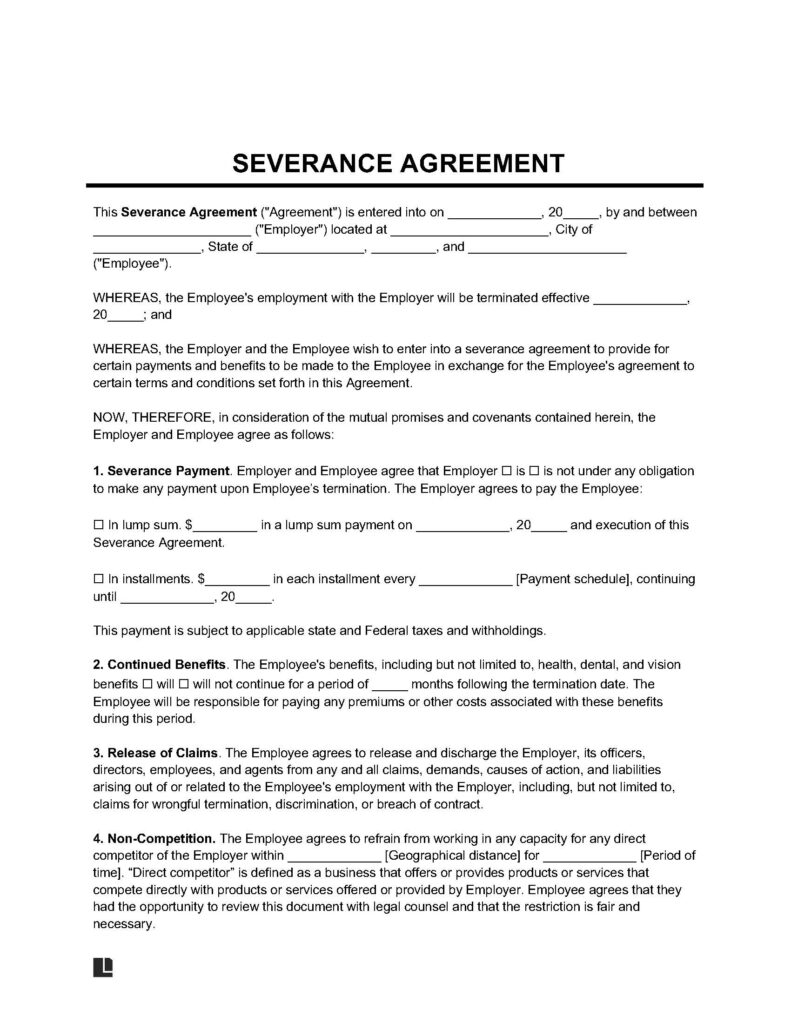
Frequently Asked Questions
What is a fair severance agreement?
A fair severance agreement compensates the employee according to the time and effort they dedicated to the company and offers a continuation of benefits to ensure they are cared for while looking to accept employment elsewhere.
This may look different depending on the employee’s experience and the benefits offered during the employment. In exchange, it is fair to ask the employee to keep information about the inner workings of your business or your customers confidential and not to disparage your company.
Can an employee reject a severance agreement?
Yes, an employee is not required to sign a severance agreement. There may be terms, such as a non-compete clause, that the employee is uncomfortable signing. In doing so, the employee forfeits their right to severance pay and a continuation of benefits.
Generally, it is in the employer and employee’s interest to agree to the agreement.
Why would an employer provide severance pay?
Some employers with high turnover rates, like retail stores or fast food restaurants, don’t typically offer severance pay because it would be challenging to keep up with demands.
However, some employers choose to provide severance pay for the following reasons:
- To comply with company policies
- To abide by the terms of an individual employee’s employment contract
- To encourage employees to leave voluntarily during a merger
- To abide by industry norms in specific sectors
Can an employee file for unemployment if they receive severance pay?
It depends on where you live, but most U.S. states allow employees who have received severance pay to file for unemployment. They may have to wait to apply until they receive all their severance pay. For example, if an employee received eight weeks’ worth of salary, they won’t be eligible for unemployment until those eight weeks have passed.
In an ideal situation, an employee could use the length of their severance pay to search for a new job so they won’t have to apply for unemployment benefits.
What are final paycheck laws?
Final paycheck laws govern how employers must issue employees’ final paychecks after termination. Some states don’t have specific statutes, while others specify employers must give employees’ last checks immediately or within a certain number of days/weeks. The laws may vary depending on if the employee was fired versus if they quit.



